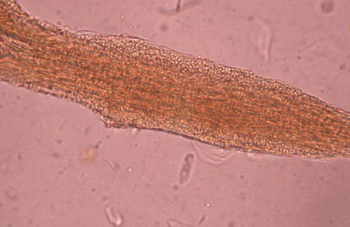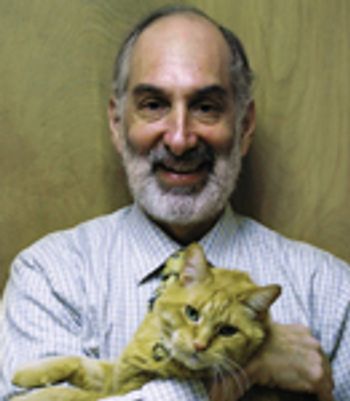
What's the cause of this pink dermal mass in a pup?

What's the cause of this pink dermal mass in a pup?

What's causing this dog's hair loss?

Advice from veterinary dermatologist Dr. Ian Spiegel.

Veterinary dermatologist Dr. Paul Bloom discusses how he handles these cases.

Beyond itching and scratching, atopic dermatitis negatively affects both pets and owners.

Intradermal testing and allergen-specific immunotherapy have worked well for my patients.

Dr. Paul Bloom reviews the recommended protocol for successful bacterial culture of skin and, in particular, skin biopsies.

Can this drug be used to alleviate the itching?

A recent study examined the perceptions of owners of dogs with this itchy condition about the owners' quality of life and that of their pets.

The tetracyclines were initially used as bacteriostatic antibiotics. Niacinamide (the amide of niacin) is a vasodilator. These agents also have some interesting in vitro and in vivo anti-inflammatory and immunomodulatory properties.

Allergen specific immunotherapy (desensitization or "allergy shots") has been one of the mainstays of care in specialized dermatology practice for years. In the mid 1980s serology (RAST) testing was marketed to veterinarians, and since then numerous companies have developed their own RAST or ELISA tests.

Diseases that affect the nose include more than discoid lupus or squamous cell carcinoma. This lecture will show many photographs of nose disorders to teach the practitioner some of the subtleties to consider when presented with a patient with nasal disease.

The etiology of this unusual condition in cats is not known.It probably falls into the category of other lymphoproliferative disorders of cats.

Atopy or Atopic dermatitis continues to be one of the most common dermatological disorders afflicting both dogs and cats. At our referral dermatology specialty practice, 75% of our patients have atopic dermatitis as one of the final diagnosis.

The most common derm problem in cats is itchy skin disease. Often these cats have allergic skin disease with many cases related to flea allergy dermatitis, atopic dermatitis and adverse food reactions.

Feline herpesvirus1 infection is most noted for causing URI disease and oral ulceration. Latent, persistent infection will occur in about 30% of affected cats. Vaccines do not prevent feline herpesvirus infection nor carriage or intermittent shedding of the virus. Recrudescence of signs or new lesions may occur with stress or concurrent illness.

It is common for more than one primary disease to be present, at least in the referral population seen at my practice. Multiple or changing secondary etiologies are also common. The most optimum management of a case requires that we recognize which primary diseases, secondary etiologies as well as modulating factors are present.

Food hypersensitivity, food intolerance and other adverse reactions to food (ARF) could be the subject of a carrier of study. Food hypersensitivity in the dog and cat can cause a myriad of effects on several different systems of the body, with the integument and digestive system being most commonly affected.

When a clinician is presented with a pruritic patient, it is correct to initially consider, and rule out, the more common hypersensitivity disorders. Atopic dermatitis, adverse food reactions, and parasite hypersensitivities (especially flea allergy dermatitis) are seen on a daily basis.

The cat has some important anatomic differences from the dog. The obvious is that there is less breed variation in pinna shape and conformation as well as relatively short and straighter ear canal.

Ear disease is a very common problem presented to veterinarians. It may be broken down into two major components, pinnal disease and otitis, though the strict definition of otitis would include any inflammatory pinnal disease.

Poor hair coats and alopecia that are not a result of inflammation or pruritus and are symmetric or involve much of the body most commonly reflect a disorder of hair growth that is metabolically or genetically related. In general the disorders will fit into one of four categories.

Pruritus is the most common manifestation of skin disease in the horse. Pruritus is exhibited in a number of ways including the obvious scratching, rubbing, chewing and biting, but also in more subtle fashion such as head shaking, foot stamping or "irritability".

A variety of different diseases are in the category of what are referred to as autoimmune or immune mediated dermatologic diseases. The diseases typically have differing etiologies though a significant component in there pathogenesis is an abnormal or deleterious immune response that affect normal cutaneous structures, such as epidermal keratinocytes, basement membranes, blood vessels or adnexal structures.

Erythema multiforme was first documented in the dog in 1983 and in the cat in 1984.